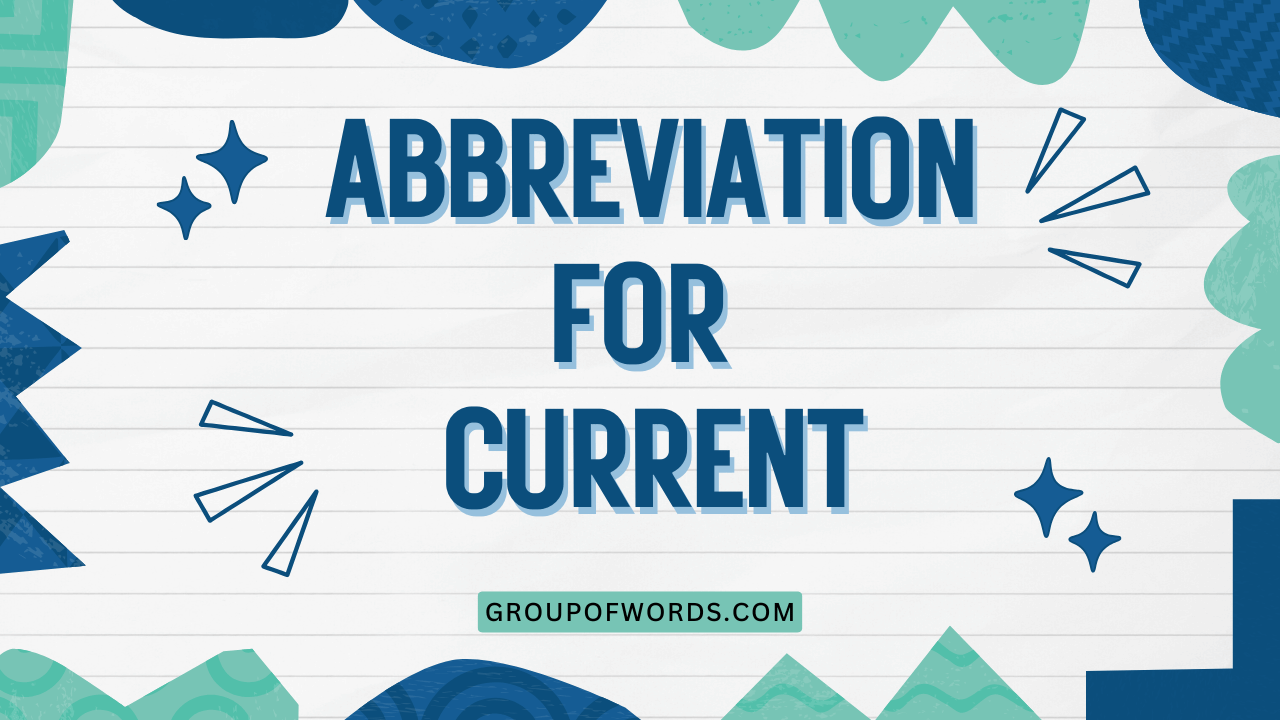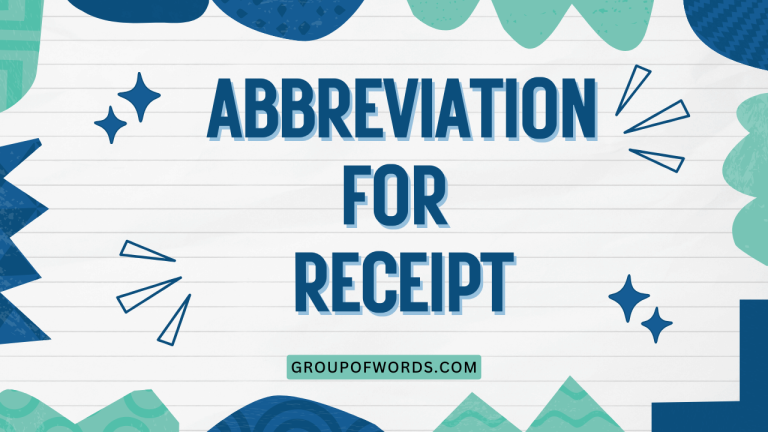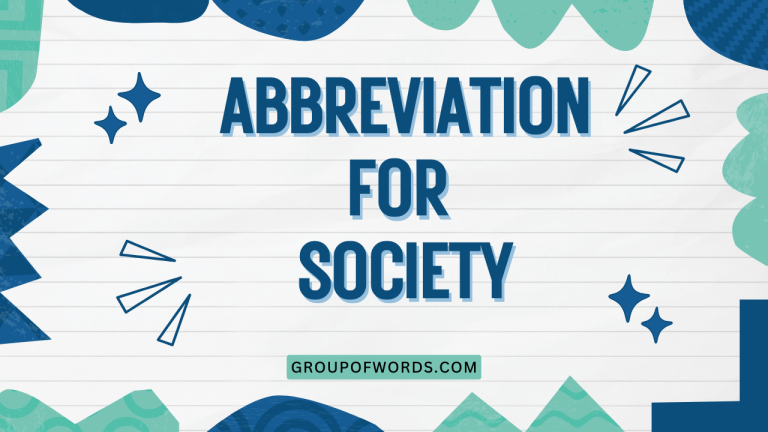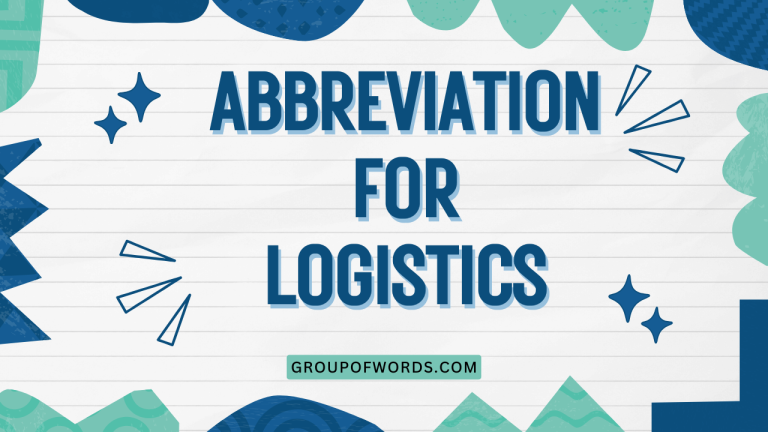“c.” Abbreviation: Mastering the Nuances of Current Usage
Understanding abbreviations is crucial for effective communication, especially in formal writing and documentation. The abbreviation “c.” stands for “current,” and knowing how and when to use it can significantly enhance the clarity and conciseness of your writing.
This article provides a comprehensive guide to the abbreviation “c.,” covering its definition, usage rules, common mistakes, and practical examples. Whether you’re a student, professional, or simply an English language enthusiast, mastering the correct use of “c.” will undoubtedly improve your overall communication skills.
This guide will walk you through the intricacies of using “c.” in various contexts. We’ll explore its different applications, common pitfalls to avoid, and provide numerous examples to solidify your understanding.
By the end of this article, you’ll be well-equipped to use “c.” accurately and confidently in your written communication.
Table of Contents
- Definition of “c.”
- Structural Breakdown
- Types and Categories of Usage
- Examples of “c.” in Sentences
- Usage Rules for “c.”
- Common Mistakes When Using “c.”
- Practice Exercises
- Advanced Topics
- Frequently Asked Questions
- Conclusion
Definition of “c.”
The abbreviation “c.” stands for the word “current.” It is used to indicate that something is happening or existing at the present time. Its function is to provide a concise way to specify the present state or period in various contexts, such as financial reports, scientific data, or general references to the present situation.
In financial contexts, “c.” might refer to the current assets, current liabilities, or the current fiscal year. In scientific research, it could denote the current conditions of an experiment or the current value of a variable.
More generally, “c.” can be used to refer to the present situation or status of something.
Classification of “c.”
“c.” is classified as an abbreviation, which is a shortened form of a word or phrase. Specifically, it’s an initialism, as it’s formed from the first letter of the word “current.” Abbreviations are commonly used to save space and time in writing, making communication more efficient.
Function of “c.”
The primary function of “c.” is to denote the present or existing state of something. It helps to distinguish the current situation from past or future ones.
This is particularly useful in contexts where it’s important to specify the time frame being referred to.
Contexts for Using “c.”
“c.” is used in a variety of contexts, including:
- Financial Reports: To indicate current assets, liabilities, or fiscal year.
- Scientific Research: To refer to current conditions or values.
- General References: To denote the present situation or status.
- Technical Documentation: To specify the current version or configuration.
Structural Breakdown
The structure of “c.” is straightforward. It consists of the lowercase letter “c” followed by a period.
The period is crucial as it indicates that “c.” is an abbreviation and not a standalone letter. The lowercase format is generally preferred, although uppercase might be seen in specific branding or style guidelines.
However, always check the style guide you are following.
The abbreviation is typically used as an adjective preceding the noun it modifies. For instance, you would say “c. assets” rather than “assets c.” The order is essential to maintain clarity and grammatical correctness.
Understanding the structural elements helps ensure correct usage and avoids potential confusion. The period is not optional; it’s a necessary component of the abbreviation.
Types and Categories of Usage
“c.” primarily functions as an adjective to specify the present state. However, the specific meaning can vary depending on the context.
Here are some common categories of usage:
Financial Usage
In financial contexts, “c.” is commonly used to refer to current assets, current liabilities, and the current fiscal year. Current assets are those that can be converted into cash within a year, while current liabilities are obligations due within a year.
The current fiscal year is the company’s present accounting period.
Scientific Usage
In scientific research, “c.” can denote the current conditions of an experiment, the current value of a variable, or the current state of a system. This helps to distinguish present measurements from past or future ones, ensuring accuracy and clarity in data analysis.
General Usage
More broadly, “c.” can be used to refer to the present situation or status of something. For example, “c. status” might refer to the current condition of a project, while “c. regulations” might refer to the laws currently in effect.
Technical Usage
In technical documentation, “c.” is used to specify the current version or configuration of a system, software, or hardware. For example, “c. version” might refer to the latest software release, while “c. configuration” might describe the present settings of a device.
Examples of “c.” in Sentences
To illustrate the usage of “c.” in various contexts, here are several examples, categorized by the field of application. These examples will help you understand how to use “c.” correctly and effectively in your writing.
Table 1: Financial Examples
| Sentence | Explanation |
|---|---|
| The company’s c. assets are significantly higher than its c. liabilities. | This indicates that the company’s assets that can be converted to cash within a year exceed its short-term debts. |
| C. revenue projections show a 15% increase compared to last year. | This means that the predicted revenue for the current period is 15% higher than the revenue from the previous year. |
| We need to review the c. budget to identify areas for cost reduction. | This refers to the budget that is currently in effect. |
| The c. fiscal year ends on December 31st. | This specifies the ending date of the current accounting period. |
| C. market trends suggest a shift towards sustainable investments. | This indicates the prevailing trends in the market at the present time. |
| The c. interest rate is affecting our borrowing costs. | This refers to the present interest rate that is influencing the cost of borrowing money. |
| Our c. cash flow is strong, allowing for strategic investments. | This means that the company’s present cash flow is healthy, enabling investments. |
| The c. economic climate is favorable for business expansion. | This indicates that the present economic conditions are conducive to business growth. |
| C. accounting standards require stricter compliance. | This refers to the present accounting standards that mandate stricter compliance. |
| The c. stock price reflects positive investor sentiment. | This means that the current price of the stock is indicative of positive investor confidence. |
| We are analyzing c. sales data to improve marketing strategies. | This refers to the sales data from the present period that is being analyzed. |
| The c. tax laws have implications for our financial planning. | This indicates that the current tax laws are relevant to the company’s financial planning. |
| C. operational costs are being closely monitored to maintain profitability. | This means that the present operational costs are being carefully observed. |
| The c. financial report provides a detailed overview of our performance. | This refers to the most recent financial report that offers an overview. |
| C. investment strategies are focused on long-term growth. | This indicates that the strategies presently being used are aimed at long-term growth. |
| The c. exchange rate is impacting our international transactions. | This means that the present exchange rate is affecting transactions. |
| C. banking regulations are becoming increasingly stringent. | This refers to the present banking regulations that are becoming more strict. |
| The c. insurance policy covers a wide range of risks. | This indicates that the policy presently in effect provides coverage. |
| C. audit procedures are designed to ensure compliance. | This refers to the present auditing procedures that are designed to ensure compliance. |
| The c. market capitalization reflects the company’s value. | This means that the present market capitalization accurately represents the company’s worth. |
| C. debt levels are manageable, ensuring financial stability. | This indicates that the present debt levels are within a manageable range. |
| The c. profit margin is above industry average. | This means that the present profit margin is higher than the average in the industry. |
| C. trade policies are influencing our export activities. | This refers to the present trade policies that are impacting export activities. |
Table 2: Scientific Examples
| Sentence | Explanation |
|---|---|
| The c. temperature of the reaction is 25 degrees Celsius. | This specifies the temperature at the present moment. |
| C. data indicates a significant correlation between the two variables. | This means that the data currently available shows a correlation. |
| We are analyzing the c. results of the experiment. | This refers to the results obtained from the most recent experiment. |
| The c. atmospheric pressure is affecting the experiment’s outcome. | This indicates that the present atmospheric pressure is influencing the results. |
| C. research suggests a new approach to treating the disease. | This means that the research currently being conducted proposes a new treatment method. |
| The c. phase of the study focuses on data collection. | This indicates that the present stage of the study involves gathering data. |
| C. findings contradict previous assumptions. | This means that the current discoveries challenge earlier beliefs. |
| The c. model accurately predicts the system’s behavior. | This indicates that the present model effectively forecasts the system’s behavior. |
| C. methodology involves advanced statistical analysis. | This refers to the methodology presently being used, which includes statistical analysis. |
| The c. hypothesis is based on preliminary observations. | This means that the present hypothesis is formed from initial observations. |
| C. technology enables more precise measurements. | This indicates that the technology presently used allows for more accurate measurements. |
| The c. approach is more efficient than previous methods. | This means that the present method is more effective than earlier ones. |
| C. challenges include data validation and interpretation. | This refers to the challenges presently faced, such as data validation. |
| The c. standard is used to ensure consistency in measurements. | This indicates that the present standard is used to maintain uniformity. |
| C. trends indicate a growing interest in renewable energy. | This means that the trends currently observed suggest a rising interest. |
| The c. state of matter is critical to the experiment’s success. | This indicates that the present state of matter is important for the experiment. |
| C. limitations are being addressed in the next phase of research. | This refers to the limitations presently encountered that will be addressed. |
| The c. rate of reaction is being carefully monitored. | This means that the present rate of reaction is being closely observed. |
| C. evidence supports the proposed theory. | This indicates that the evidence currently available supports the proposed theory. |
| The c. understanding of the phenomenon is constantly evolving. | This means that the present understanding is continuously changing. |
| C. practices are aligned with ethical guidelines. | This refers to the present practices that are in accordance with ethical standards. |
| The c. focus is on developing sustainable solutions. | This indicates that the present emphasis is on creating sustainable solutions. |
| C. findings will be published in a peer-reviewed journal. | This means that the current discoveries will be published in a journal. |
Table 3: General Examples
| Sentence | Explanation |
|---|---|
| The c. situation requires immediate attention. | This refers to the present state of affairs that needs prompt action. |
| C. regulations prohibit smoking in public areas. | This means that the laws currently in effect ban smoking. |
| We need to assess the c. status of the project. | This refers to the present condition of the project. |
| The c. policy is under review. | This indicates that the present policy is being re-evaluated. |
| C. trends indicate a shift towards remote work. | This means that the trends currently observed suggest a move to remote work. |
| The c. leadership is focused on innovation. | This indicates that the present leaders are emphasizing innovation. |
| C. challenges include adapting to technological changes. | This refers to the challenges presently faced, such as adapting to technology. |
| The c. focus is on improving customer satisfaction. | This indicates that the present emphasis is on enhancing satisfaction. |
| C. practices promote diversity and inclusion. | This refers to the practices presently used that promote diversity. |
| The c. standard is used to ensure quality. | This indicates that the present standard is used to maintain quality. |
| C. initiatives aim to reduce carbon emissions. | This means that the initiatives presently in place aim to lower emissions. |
| The c. economic conditions are affecting small businesses. | This indicates that the present economic state is influencing small businesses. |
| C. events are being organized to celebrate the anniversary. | This refers to the events presently being planned to mark the anniversary. |
| The c. guidelines are designed to ensure safety. | This indicates that the present guidelines are intended to ensure safety. |
| C. strategies are focused on long-term sustainability. | This means that the strategies presently used are aimed at sustainability. |
| The c. market demand is driving increased production. | This indicates that the present demand is causing higher production levels. |
| C. concerns are being addressed through community engagement. | This refers to the concerns presently voiced that are being addressed. |
| The c. approach is more collaborative than previous methods. | This means that the present method is more collaborative than earlier ones. |
| C. resources are being allocated to support education. | This indicates that the resources presently available are being used. |
| The c. understanding of the issue is constantly evolving. | This means that the present understanding is continuously changing. |
| C. requirements must be met for project approval. | This refers to the requirements presently in place that must be met. |
| The c. design is more user-friendly than the old one. | This means that the present design is easier to use than the previous design. |
| C. efforts are being made to improve infrastructure. | This indicates that the efforts presently underway are aimed at improving infrastructure. |
Usage Rules for “c.”
Using “c.” correctly involves following specific rules to ensure clarity and accuracy in your writing. These rules cover capitalization, punctuation, and context-specific considerations.
Capitalization Rules
“c.” is typically written in lowercase. While uppercase might be seen in specific contexts, lowercase is generally preferred.
Always refer to the specific style guide you are following to ensure consistency.
Punctuation Rules
The abbreviation “c.” must always be followed by a period. The period indicates that it is an abbreviation and not a standalone letter.
Omitting the period is a common mistake that should be avoided.
Context-Specific Rules
The meaning of “c.” can vary depending on the context. In financial reports, it refers to current assets, liabilities, or fiscal year.
In scientific research, it denotes current conditions or values. Always ensure that the context makes the meaning clear to the reader.
Placement Rules
The abbreviation “c.” is typically placed before the noun it modifies. For example, “c. assets” is the correct order.
Placing it after the noun can lead to confusion and should be avoided.
Formal vs. Informal Usage
“c.” is generally more appropriate for formal writing, such as financial reports, scientific papers, and technical documentation. In informal writing, it’s often better to use the full word “current” for clarity.
Common Mistakes When Using “c.”
Several common mistakes can occur when using the abbreviation “c.” Being aware of these mistakes can help you avoid them and ensure accurate usage.
Table 4: Common Mistakes
| Incorrect | Correct | Explanation |
|---|---|---|
| The assets c. are high. | The c. assets are high. | “c.” should precede the noun it modifies. |
| Current assets are high. | The c. assets are high. | Using “current” instead of “c.” is acceptable, but use “c.” when aiming for brevity in formal contexts. |
| The c assets are high. | The c. assets are high. | The period is essential to indicate that “c.” is an abbreviation. |
| C. assets are high. | The c. assets are high. | “c.” is typically written in lowercase, although uppercase may be acceptable in some specific contexts. |
| The c. situation is bad. | The c. situation is serious. | While grammatically correct, ensure the adjective accurately describes the situation. (Example illustrates semantic clarity, not grammatical error.) |
| The current situation is bad. | The c. situation is serious. | Using “current” is acceptable, but in formal contexts, “c.” can be used. Example also illustrates semantic clarity. |
| The assets that are c. are high. | The c. assets are high. | Avoid roundabout phrasing; “c.” should directly modify the noun. |
| The at present assets are high. | The c. assets are high. | “c.” provides a concise alternative to phrases like “at present.” |
| The newly assets are high. | The c. assets are high. | “Newly” implies recent acquisition, whereas “c.” refers to the present state. |
| The assets now are high. | The c. assets are high. | “c.” succinctly conveys the meaning of “assets now.” |
Practice Exercises
Test your understanding of “c.” with these practice exercises. Fill in the blanks with the correct form of “c.” or rewrite the sentences using “c.” where appropriate.
Exercise 1: Fill in the Blanks
Complete the following sentences using the abbreviation “c.”
Table 5: Exercise 1
| Question | Answer |
|---|---|
| The ____ regulations prohibit smoking indoors. | c. |
| We need to analyze the ____ market trends. | c. |
| The ____ temperature is affecting the reaction rate. | c. |
| Our ____ focus is on improving customer service. | c. |
| The ____ version of the software has several new features. | c. |
| The ____ assets are being evaluated for depreciation. | c. |
| ____ research indicates a potential cure for the disease. | c. |
| The ____ economic climate is impacting business investments. | c. |
| ____ initiatives aim to reduce carbon emissions. | c. |
| The ____ standard is used to ensure quality control. | c. |
Exercise 2: Rewrite the Sentences
Rewrite the following sentences using the abbreviation “c.” where appropriate.
Table 6: Exercise 2
| Question | Answer |
|---|---|
| The current assets are significantly higher than the liabilities. | The c. assets are significantly higher than the liabilities. |
| The current research suggests a new approach. | The c. research suggests a new approach. |
| The current regulations require stricter compliance. | The c. regulations require stricter compliance. |
| The current situation demands immediate action. | The c. situation demands immediate action. |
| The current market trends indicate a shift towards sustainability. | The c. market trends indicate a shift towards sustainability. |
| The current economic conditions are impacting small businesses. | The c. economic conditions are impacting small businesses. |
| The current version of the software has improved security features. | The c. version of the software has improved security features. |
| The current leadership is focused on strategic growth. | The c. leadership is focused on strategic growth. |
| The current focus is on enhancing customer satisfaction. | The c. focus is on enhancing customer satisfaction. |
| The current standard ensures consistent quality across all products. | The c. standard ensures consistent quality across all products. |
Advanced Topics
For advanced learners, understanding the nuances of “c.” in specific professional contexts can be beneficial. This includes its use in legal documents, complex financial analyses, and specialized scientific publications.
In legal documents, “c.” may refer to current laws or regulations that are relevant to a case. In financial analyses, it can be used to differentiate between current and historical financial data.
In scientific publications, it may specify the current state of research or the current understanding of a particular phenomenon.
Furthermore, understanding the evolution of the term and its usage over time can provide a deeper appreciation for its role in language and communication.
Frequently Asked Questions
Here are some frequently asked questions about the abbreviation “c.”
- What does “c.” stand for?
“c.” stands for “current.”
- Is it necessary to include the period after “c.”?
Yes, the period is essential as it indicates that “c.” is an abbreviation.
- Is it appropriate to use “c.” in informal writing?
While grammatically correct, it is more suitable for formal writing. In informal contexts, using the full word “current” may be clearer.
- Can “c.” be used in uppercase?
While generally written in lowercase, uppercase may be acceptable in specific contexts. However, lowercase is typically preferred. Always refer to the style guide you are following.
- Where should “c.” be placed in a sentence?
“c.” should be placed before the noun it modifies, such as in “c. assets.”
- What is the difference between using “c.” and “current” in a sentence?
While both convey the same meaning, “c.” is a concise abbreviation suitable for formal writing. “Current” is a more explicit term that may be preferred in informal or less technical contexts where clarity is paramount.
- In what fields is “c.” most commonly used?
“c.” is frequently used in finance, science, and technical documentation to denote the present state or condition.
- How can I ensure I’m using “c.” correctly?
Pay attention to the context, follow the capitalization and punctuation rules, and ensure that “c.” precedes the noun it modifies. Reviewing examples and completing practice exercises can also help solidify your understanding.
Conclusion
Mastering the abbreviation “c.” is a valuable skill that enhances the clarity and conciseness of your writing. By understanding its definition, usage rules, and common pitfalls, you can confidently use “c.” in various contexts.
Remember to follow the capitalization and punctuation rules and always ensure that the context makes the meaning clear to the reader.
Continue to practice using “c.” in your writing and refer back to this guide as needed. With consistent effort, you’ll become proficient in using “c.” accurately and effectively, improving your overall communication skills.
Always remember that precision and clarity are key to effective communication, and using abbreviations like “c.” correctly contributes to achieving that goal.






